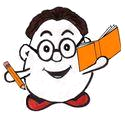Some Helpful Tools
Select the correct answer for each question from the choices given. When you have completed your quiz, check your answers.
Use the Personalized Progress Chart in the Extra Tools section to record your score.
1. What is the smallest part of a compound that can exist by itself?
a. molecule
b. cell
c. atom
2. A(n) ____________ is a negatively charged particle.
a. proton
b. neutron
c. electron
3. The ___________ is the center of the atom that contains protons and neutrons.
a. nucleus
b. nucleolus
c. nucleon
4. A substance that contains particles and atoms, occupies space, and has mass is called __________.
a. matter
b. protoplasm
c. cytoplasm
5. Which of the following is the smallest part of an element that contains a positively charged nucleus and is surrounded by a system of electrons?
a. molecule
b. atom
c. mass
6. The study of how matter is made, its characteristics, and how it works under certain conditions is called _____________.
a. biology
b. chemistry
c. anthropology
7. A pure substance that cannot be broken down into a simpler form is called a(n) __________.
a. matter
b. compound
c. element
8. A(n) _____________ is a subatomic particle in the nucleus of the atom that has a positive and negative charge, which makes it neutral.
a. element
b. neutron
c. electron
9. The nuclear reaction where a neutron splits an atomic nucleus into two smaller atoms is called ______________.
a. cold fusion
b. nuclear fission
c. nuclear fusion
10. A strong force that holds subatomic particles of the nucleus together is known as __________.
a. quantum force
b. nuclear force
c. extreme force
11. The nuclear reaction that releases radiation from an unstable material is called ___________.
a. reactive
b. explosive
c. radioactive
12. A positively charged particle is called a(n) _______________.
a. atom
b. proton
c. electron
13. The number of protons found in the nucleus of an atom is called ___________.
a. absolute number
b. atomic number
c. proton number
14. The total weight of an atom is called _________.
a. mean weight
b. absolute weight
c. atomic weight
15. Which of the following is the production of complex substances from simple living organisms?
a. biosynthesis
b. solvent
c. solution
16. Which of the following is an organic compound consisting of amine and carboxylic acid?
a. amino acids
b. proteins
c. carbohydrates
17. The term _________ refers to a chemical bond where one atom gives up an electron to form a positive ion and the other atom gains an electron to form a negative ion.
a. isotope
b. isomer
c. ionic bond
18. One of two or more atoms whose nuclei have the same number of protons and a different number of neutrons is called ____________.
a. allotrope
b. isotope
c. ionic bond
19. A single molecule that can link together with another singular molecule to form a polymer is called a(n) __________,
a. monomer
b. element
c. bond
20. The term __________ refers to atoms or groups of atoms with unpaired number of electrons.
a. fluid
b. free radical
c. gas
21. Which of the following means the amount of time it takes for half of a substance to undergo a specific process?
a. half-life
b. half-substance
c. half-reaction
22. An atom with an uneven electrical charge due to the loss or gain of one or more electrons is called an _______.
a. ion
b. ionic bond
c. isotope
23. Which of the following is a large molecular chain-like structure that is made up of smaller molecules called monomers?
a. compounds
b. elements
c. polymer
24. The chemical process that combines several monomers to create a polymer is called ____________.
a. polymerization
b. combination reaction
c. decomposition reaction
25. Amino acid polymers that help in the growth and repair of cells is called __________.
a. molecules
b. carbohydrates
c. protein
Science: Composition of Matter - Quiz
